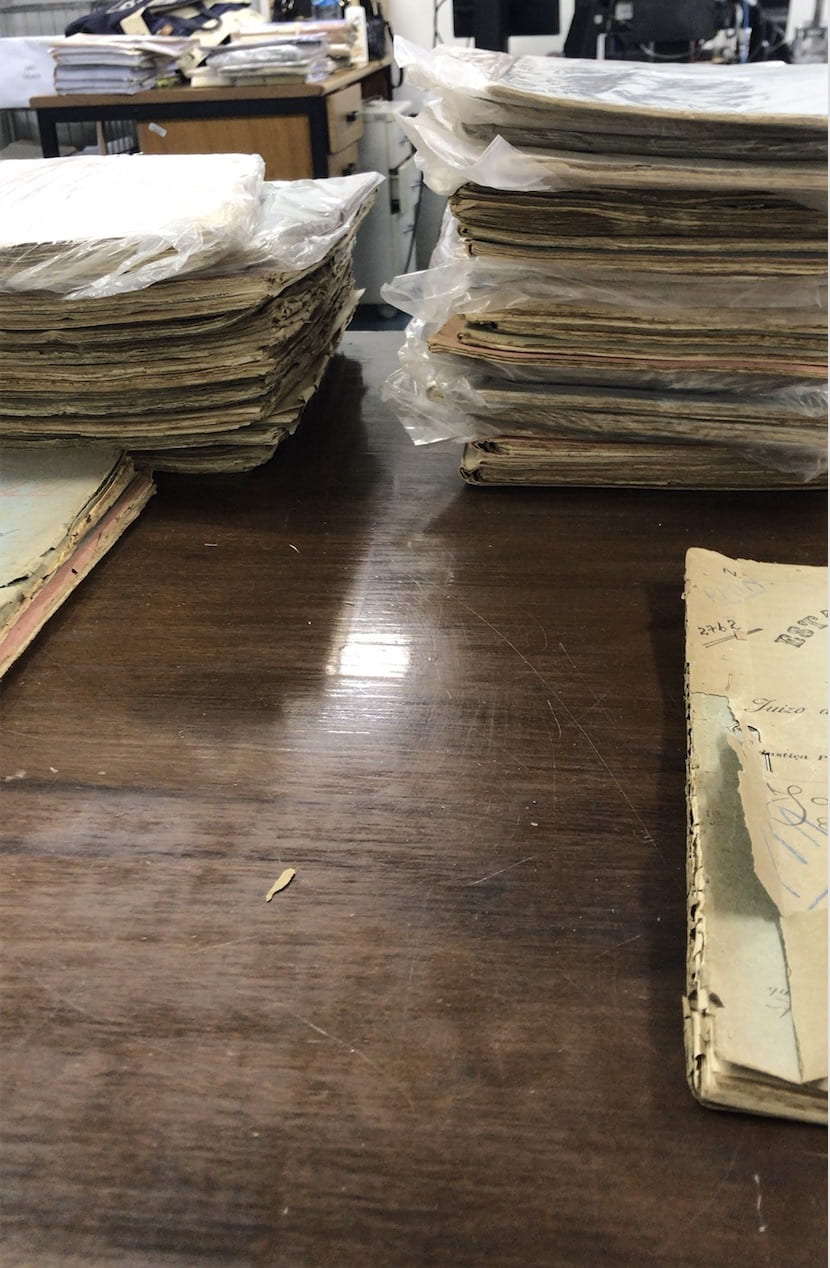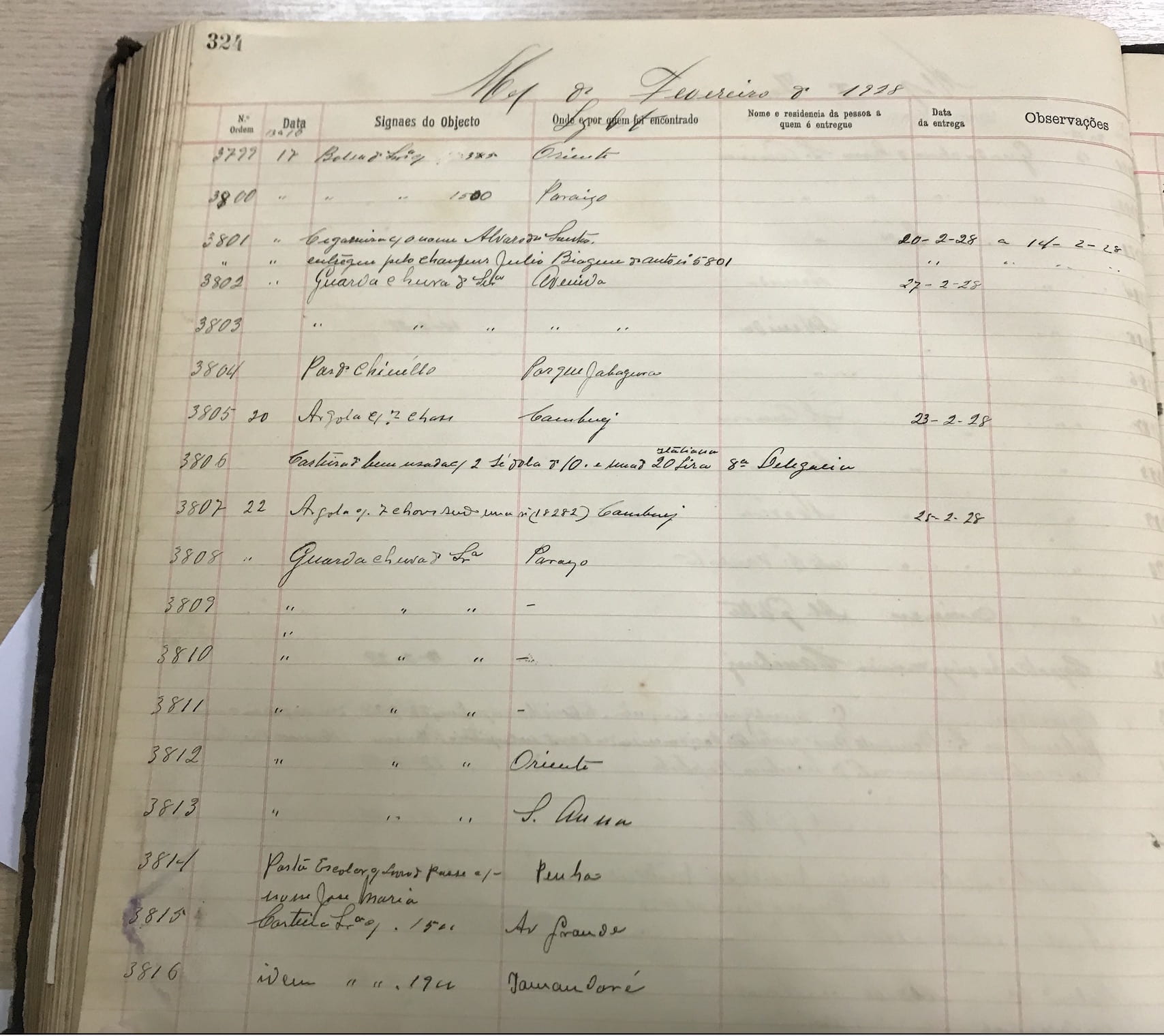On Archives, Dissertations, and All We Cannot Control
Hanna Manente Nunes, PhD Candidate, History
I started archival research for my dissertation roughly two years ago in the Summer of 2018. At that point I had no such thing as a project, although I did have ideas, some better articulated than others, and I had questions, though none of them were particularly clear. With this, I spent three months at São Paulo’s Judicial Archive (ATJSP) photographing over 500 criminal cases (Figure 1). At the beginning of the following Spring quarter, I received a text message from one of ATJSP’s archivists. The state government, she wrote, was shutting down the archive’s operations in order to cut costs. Documents would be transferred to a private storage facility in a neighboring city, but it was unclear when and under which circumstances they would be made available again. If I still had work to do, she warned, I had to do it soon because in three weeks’ time the building would be closed. From Chicago, all I could do was delegate the data collecting to others. The coordinated effort of a good partner and four willing undergraduates led to almost 200 cases being sorted and photographed in those three fateful weeks. It was out of luck that I began my research when and where I did, befriending the right person at the right time. I was lucky to find five people willing to fully dedicate themselves to my research for almost a month. Luck, I have learned, is an intrinsic part of the process.
Figure 1: Unsorted criminal cases at the now deactivated São Paulo Judicial Archive, taken in the Summer of 2018
When Spring of 2019 came after what felt like a long-lasting winter, I had more pictures than I could possibly read stored in the cloud. I also, quite surprisingly, was convinced I had a plan and foundation for my dissertation. Somehow, I managed to successfully convince others of my plan, and so I became a candidate. Instead of haphazardly-put-together ideas, I had ideas. Instead of convoluted questions, I had questions. With these ideas and questions, I walked into the city of São Paulo’s Municipal Archive. Two weeks in, my plan began to falter. The documents refused to conform to my beautifully formulated inquiries. They kept stretching me toward the margins of pages, making me scribble thoughts as they came in. Days passed in a haze, partially due to the unforgiving arrival of the Brazilian summer in that tiny room with no A/C and a barely functioning fan, but also due to the daily exercise of letting go. Every document that went from a dusty box to the cloud moved me further away from the plan that had made me a candidate. I had invested months in pulling my best thoughts together into one cohesive narrative, but the documents did not seem to care. When I finally gathered up the courage to send a report to my committee, it read “(all) things have changed.” The haze, I have learned, is an intrinsic part of the process.
I had very few project-related certainties left when the world as a whole lost its footing in the Winter quarter of 2020. I knew, for instance, that my dissertation was going to be about consumption, popular commercial practices, and material exchanges that mediated São Paulo’s urban space in the early twentieth century. I knew, based on more than 200 gigabytes of photographed documents I stored in the cloud, that the picture I will eventually sketch is one of a city largely connected by criminal, illegal, and informal economic activities. I knew, as annotated on a lost and found book kept by São Paulo’s Central Precinct, that on February 22, 1928, thirteen people had forgotten their umbrellas in the city’s trams (Figure 2). But I did not know if it actually rained on February 22, 1928, and that was key. While the forgotten umbrellas seemed to indicate so, that was not definite proof. Looking for weather forecasts, I found a column at the Correio Paulistano newspaper which luckily stated on February 23rd that on the previous day the sky had been overcast and rainy (Figure 3). Digging a bit deeper, I found several news reports published by the Estado de São Paulo which made note of a severe thunderstorm that had befallen the city. Bingo!
Figure 2: A 1928 page of the “lost and found” logbook kept by São Paulo’s First Precinct, held in São Paulo’s Public Archive
Figure 3: The meteorological report published on February 23, 1928, in the Correio Paulistano
I have come to accept uncertainty, luck, and being dazed and confused as intrinsic parts of the research process. All that I cannot control plays as formative role in my work as all that I can control. The line, however, needs to be drawn somewhere. For now, I have drawn mine at having the first sentence of my dissertation’s opening chapter being factually right. The sentence might very well change in two weeks’ time. It quite likely will, but until then, no other words will ever sound so accomplished. To say that it rained on February 22, 1928, would be an understatement. On that day, in the dazzling city of São Paulo, it poured.



